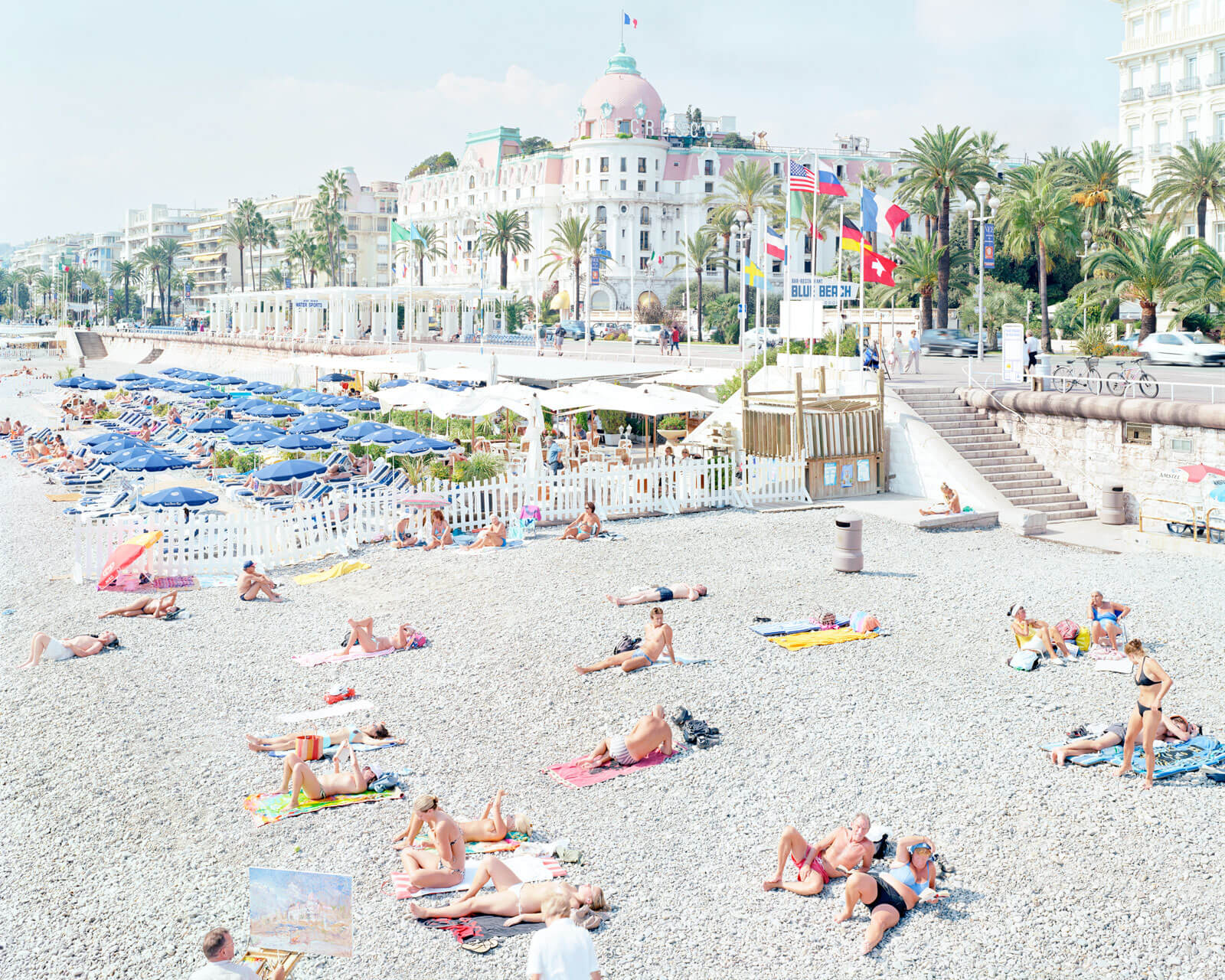In July 2004 I spent my longest day on a beach, 20 hours in Rosignano observing an ever-changing human landscape. My assistant Giovanni and I arrived around noon, we set our privileged point of view and began our waiting game, overlooking a crowd of bathers playing, reading, eating… As usual around 5pm people slowly started to pack their stuff and left.
That time, we didn’t leave with them and we kept waiting as we knew a big party would have started at night. As families and couples were heading back home, young people started to colonize the space setting up their tents for the night. The party – the so-called Sangriata – used to be organized every year by local lifeguards and had become widely known in the area.
Thousands of people soon began to gather around loud music, a revamped version of sangria and hard drugs – it quickly became more than wild! Throughout the party there were several attempts to climb to the top of our scaffolding, which thankfully didn’t move and resisted the assaults.
Around 6am the early morning lights started to reveal that post-apocalyptic scene: people resting in their tents, garbagemen picking up the trash left behind, and everything was slowly returning to normality. At 10am the tension that had been building throughout the night completely eased and we finally decided it was time to go back home.
Sometimes during my interviews I am asked how I capture the passage of time in my pictures, I think this session is a clear example of that. In these scenes, taken at different moments of the day, the Solvay Factory is always present in the backdrop. Its incessant production process contrasts with the foreground where large groups of people come and go, continuously redefining this space of leisure throughout the day, thus highlighting the ephemeral and illusory nature of what we now call free time.










